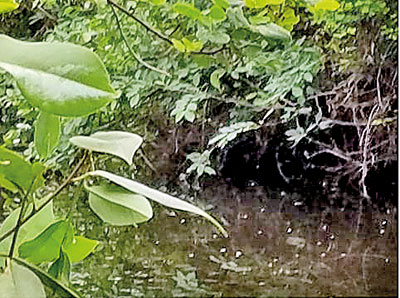News
100 acres of Muthurajawela marsh to be filled with sand for LNG-fired power plants
The Government is to fill around 100 acres in the Muthurajawela urban buffer zone (UBZ) to locate future liquefied natural gas (LNG)-fired power plants planned by the Ceylon Electricity Board.
The Sri Lanka Land Development Corporation (SLLDC) will reclaim the land using 1.5mn cubic metres of offshore sand, an environment impact assessment (EIA) report states. The Mudiyansege, Ambagaha and Mahabage canals are to be widened under the project to prevent flooding.
The area is a marshland. It has 84 species of plants with one endemic and two nationally threatened species. Of the 202 species of fauna recorded, nine are endemic, four are vulnerable and eight, nationally threatened.
 “Under no circumstances should there be any expansion of land development beyond that released by Gazette notification,” the report warns. “Separate environmental studies should be carried out for the ensuring sub-projects in the filled area, prior to their being implemented.”
“Under no circumstances should there be any expansion of land development beyond that released by Gazette notification,” the report warns. “Separate environmental studies should be carried out for the ensuring sub-projects in the filled area, prior to their being implemented.”
This land was released from the UBZ of the Muthurajawela sanctuary under a gazette notification issued in September 2018. The EIA report is now available on the website of the Central Environmental Authority (CEA). It says the project site is “a mere 1%” of the UBZ, the conservation zone and the Negombo lagoon.
The CEB’s main load centre is in the Western region. And several large-scale development projects–the Colombo Port City, multi-modal transport hub, the Maritime City, Science and Technology City and Administrative City–will require power. There is no other 100-acre block available for LNG plants close to Kerawalapitiya, the EIA says.
“Due to proposed project entire marsh will be converted to a terrestrial land with sand,” the report notes. “This will have a significant impact from the ecological aspect since breeding, spawning grounds will be lost.” But it adds that the area is already “highly man-modified”.
The Muthurajawela marsh is believed to be around 7,000 years old, the EIA states. In 1996, the Government declared 4,390 acres of it to be a wetland sanctuary. The region has 192 distinct species of flora and 209 distinct species of fauna, including the Slender Loris, as well as another 102 species of birds. Some are indigenous to the marsh.
“The reclamation could lead to changes in water retention capacity, with water draining into the wetland ecosystem. “Therefore, some of the marsh area will be aerated and trapped carbon may release due to created aerobic situation,” the EIA says. “This will help to accelerate the global warming scenario.”
“After the development, the temperature may go up in the surrounding vicinity of the site,” it adds. “It may have negative impact on the buffer zone of the Muthurajawela sanctuary.”
To mitigate these impacts, the EIA recommends enrichment of the UBZ. “At present, the UBZ supports only a moderately rich biodiversity,” it outlines. “Therefore, it is recommended that the habitat quality of the UBZ be increased by planting more native wetland species that attract more species into the site such as butterflies and birds etc.”
“Moreover, steps can be taken to increase the microhabitat diversity of the UBZ by creating a mosaic of habitats that support a high biodiversity,” it says. “Bank vegetation should be managed in a manner that supports a high diversity of edge species. It is also important to maintain habitat connectivity as the site supports several species such as fishing cats that have larger home ranges.”
The EIA, carried out by the SLLDC’s Research and Designs Division, strongly recommends the development of “an overall habitat management plan.

